BLOG ARTICLE
How to Build Backlinks Manually - Actionable Tips
Last updated: 4/13/2025
Last updated: 4/13/2025
Backlinks continue to be one of the most crucial elements of search engine optimization (SEO).
However, if you’ve ever searched for “how to build backlinks,” you’ve likely come across a flood of advice that’s either outdated or completely unrealistic for small business owners or solopreneurs.
We’ve been there: the endless trial-and-error, wasted time and resources, and the frustration of following strategies that simply don’t work if you have limited resources.
Through extensive testing, we’ve figured out what actually works, what doesn’t, and most importantly, why.
In this article, we’ll share our journey in discovering the best strategies to build backlinks that truly worked for us as a small business.

Why Most Backlink Advice Falls Short
Many backlink strategies you’ll come across online are either outdated or rely on quick fixes that rarely provide lasting value. Even worse, they’re often presented as one-size-fits-all solutions, ignoring critical factors like your niche, budget, or available resources.
Successful backlink building focuses on acquiring links that are relevant, authoritative, and genuinely enhance your website’s visibility and credibility, rather than simply aiming for sheer quantity. Let’s dive into some popular strategies that may seem appealing in theory but often fall short in practice.
The Backlink Strategies That Did NOT Work for Us
Here are some of the most commonly recommended backlink-building tactics that, in practice, proved to be inefficient or outright ineffective for a small business like ours.
1. “Write Quality Content That Earns Backlinks”
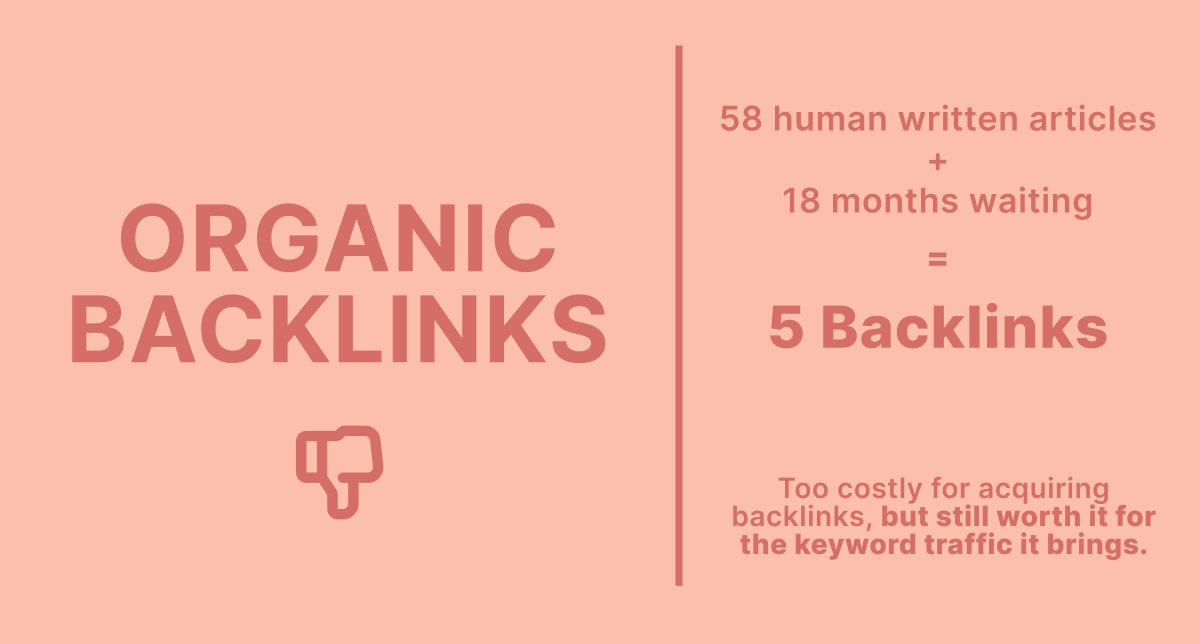
This is perhaps the most popular advice you’ll encounter in articles about link building or from SEO gurus. Even Google champions this approach, portraying it as the gold standard for acquiring backlinks in alignment with their guidelines.
If you’re a large company with the resources to consistently produce in-depth content, conduct unique research through surveys and studies, and wait months for backlinks that may or may not materialize, this strategy might work.
But for the other 99% of businesses and content creators, it simply doesn’t deliver.
For one of our websites, which attracts around 30,000 monthly visits from Google for relevant keywords, we’ve published dozens of detailed, human-written blog posts with valuable content that people genuinely enjoy reading (evidenced by solid dwell times).
Over two years, however, these posts earned only a handful of organic backlinks.
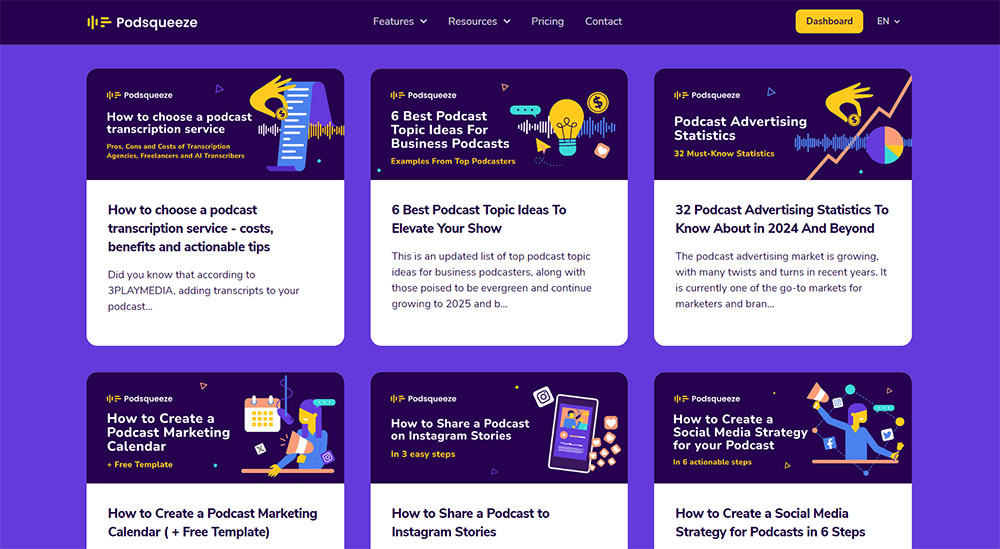
We even tried creating blog posts that compiled relevant statistics from multiple sources, hoping they would become go-to references for other writers. Unfortunately, these articles failed to gain meaningful traction on Google and, predictably, didn’t earn any organic backlinks either.
2. Buying Backlinks

A while ago, we were exploring ways to boost our Google presence for one of our websites. As a small, bootstrapped business, our SEO budget had to be carefully managed.
However, since SEO was performing well for this particular site, we decided to scale its presence further. Alongside creating in-depth, human-written content, we wanted to actively focus on link building.
During a founder meetup, we connected with another entrepreneur who hired a freelancer to handle link building. Intrigued, we decided to give it a try.
After an initial meeting with the freelancer, everything seemed legitimate. We agreed to pay $500 per month for outreach efforts, in addition to covering the cost of backlinks directly paid to webmasters.
On average, webmasters charged around $70 per backlink for sites with a Domain Ranking (DR) between 40-60. It sounded like a reasonable investment, so we decided to proceed.
The Outcome:
We terminated the service after just one month. The backlinks the freelancer secured were from generic, irrelevant websites with questionable backlink profiles. These sites lacked niche relevance and added no real value to our SEO strategy.
Buying backlinks might seem like an easy shortcut, but it’s riddled with risks. Many sellers promise high-quality links but end up providing backlinks from irrelevant or low-authority sites.
Why It Falls Short:
- High Cost: Quality backlinks can easily cost $500 or more, with no guarantee of results. And low quality websites can still charge you 50-70$.
- Low ROI: Links from irrelevant or low-quality sites rarely make a noticeable difference in SEO performance.
- Google Penalties: Google actively penalizes sites engaged in link-buying schemes, potentially hurting your rankings instead of helping them.
The truth is, if a website is selling backlinks, it’s unlikely to be a niche-relevant, high-quality site focused on delivering genuine value to its users. More often than not, these websites are part of link farms or other questionable networks, which can do more harm than good.
3. Guest Posting
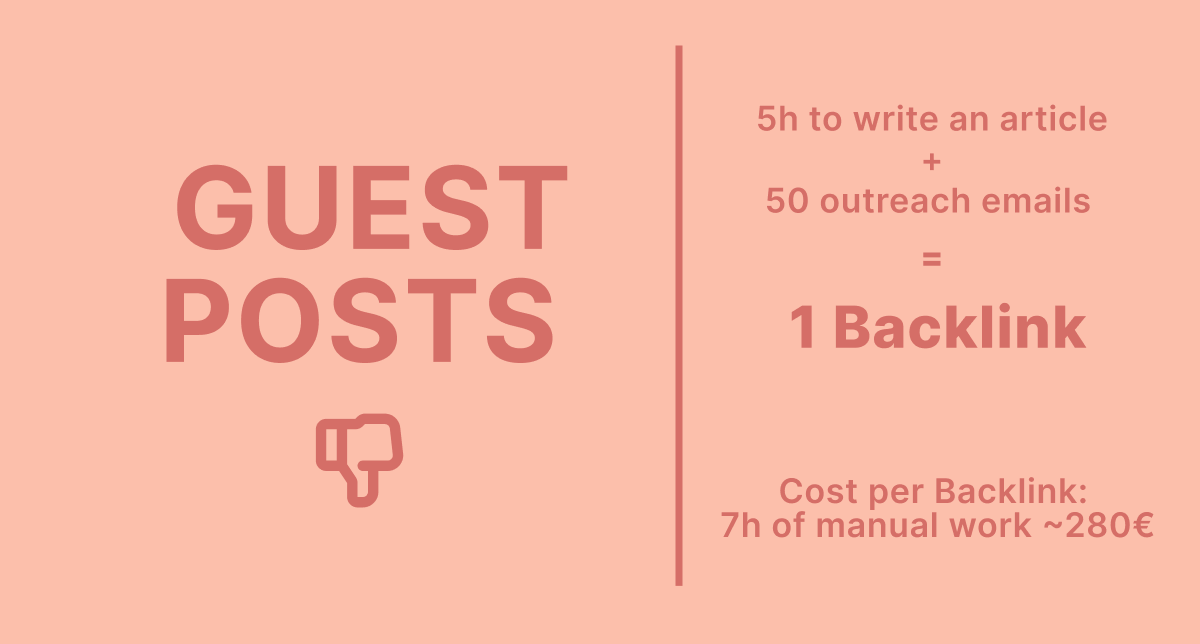
Another strategy we experimented with was guest posting.
We reached out to websites in our niche, offering our expertise in exchange for a guest post. While we did secure some positive responses and a few valuable backlinks, we quickly abandoned this approach.
Why? Because crafting a well-written, high-quality blog post takes significant time and resources. Writing such a post can take half a day or longer, making it an expensive and unsustainable method for scaling a link-building strategy as a small business.
To explore scaling, we hired a content writer on Fiverr for $40 per post. Unfortunately, the quality wasn’t good enough—it felt like generic, AI-generated content that required a lot of editing. On the other hand, hiring a professional writer for higher-quality work can cost upwards of $200 per post.
Additionally, websites that accept guest posts often provide detailed guidelines you must follow, and revisions are typically required, adding even more time to the process.
That said, guest posting did yield some standout opportunities. For example, we secured a backlink from Semrush, a top-tier website, by contributing to their annual marketing report with our insights.
Ultimately, though, this method wasn’t scalable or cost-effective for us, so we decided to move on.
Why It’s Often Inefficient:
- Time-Consuming: Identifying relevant blogs, pitching ideas, and writing quality posts demand hours of effort.
- Low Acceptance Rates: Many reputable sites receive countless pitches and accept only a handful.
- Variable Link Quality: Links from low-authority or irrelevant blogs don’t provide much value.
4. Broken Link Building
Broken link building is often touted as a beginner-friendly link-building technique. The idea is to find broken links on websites and offer your content as a replacement.
While it sounds clever, our experience showed it’s far less effective than advertised.
The process required extensive manual work to locate broken links that aligned with our content. Many of the broken links we found were on poorly maintained or low-authority websites, reducing their value.
We also tried cold outreach to suggest replacements, but the response rate was abysmal. Most site owners didn’t seem to care enough about fixing broken links to bother reviewing the content we proposed.
Why It’s Challenging:
- Manual Research: Finding relevant broken links is tedious and often requires costly tools like Ahrefs or Semrush.
- Low Response Rates: Most website owners aren’t motivated to fix broken links, especially if they don’t see immediate value in doing so.
- Limited Results: Success hinges on having highly specific, relevant content that perfectly fits the broken link.
5. Unlinked Mentions
This strategy involves reaching out to websites that mention your brand but haven’t included a link, asking them to turn the mention into a backlink. While logical in theory, it rarely delivers in practice.
Most unlinked mentions we found were on outdated pages or low-quality sites. When high-quality websites mentioned us without linking, it often appeared intentional—perhaps to avoid adding too many outbound links, which might raise spam signals for search engines, or simply to prevent giving an advantage to a potential competitor.
We reached out to a few websites with unlinked mentions but didn’t see much success. Admittedly, we didn’t pursue this strategy aggressively enough to draw definitive conclusions. However, it’s safe to say that finding relevant, high-value unlinked mentions worth pursuing is rare.
Why It Fails:
- Low Priority for Site Owners: Adding links to old articles isn’t worth the time for most webmasters.
- Low-Quality Mentions: Many unlinked mentions are from irrelevant or low-authority sites.
The Backlink Strategies That Actually Worked
Now let’s explore the methods that consistently deliver results. These strategies are scalable, mutually beneficial, and proven to work.
1. Networking and Cross-Promotions
After struggling to establish a scalable backlink strategy, we decided to take a different route: building genuine relationships within our industry.
We began actively networking with peers, attending industry conferences, joining WhatsApp groups, and reaching out to other founders on LinkedIn for quick Zoom calls.

To our surprise, many people were open to collaborations, which often led to cross-promotions, backlink exchanges, and other mutually beneficial partnerships.
Why It Works:
- Trust-Based Connections: People are far more likely to link to your site when there’s a foundation of trust and familiarity.
- Mutually Beneficial Opportunities: Initiatives like joint blog posts, co-authored content, or newsletter swaps provide value for both parties while creating opportunities for quality backlinks.
2. Creating Listicles
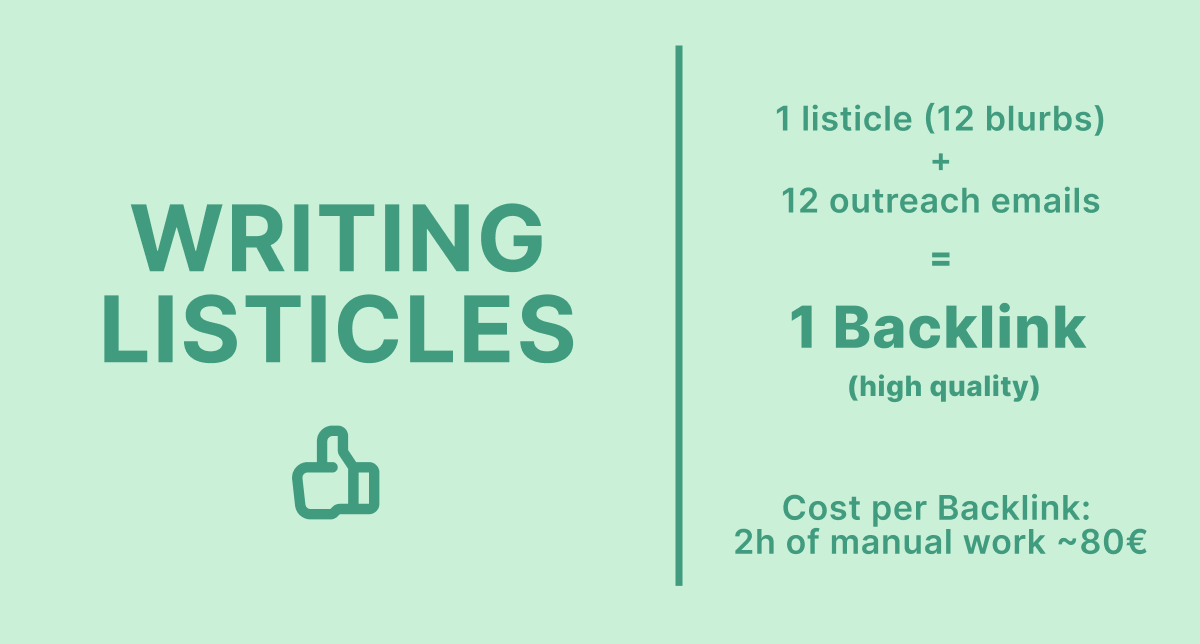
This turned out to be a game-changer for us!
After seeing some success with link exchanges for securing highly relevant backlinks from niche websites, we wanted to find a way to streamline the process.
Initially, we relied on cold outreach emails, but with a response rate of only about 3%, it was far from ideal. For every 100 websites we contacted, only three responded positively, resulting in backlinks.
To improve, we switched to a value-first approach to grab attention.
We started creating listicles, such as “Top X Tools for [Task Relevant to Your Niche],” without including any links at first. Then, we reached out to the companies featured in the listicles, letting them know they had been included. In the same message, we offered them the opportunity to secure a link in the listicle in exchange for a backlink to our site.
This approach significantly boosted our success rate, consistently yielding a 12% conversion rate. On average, for every 10 companies we reached out to, one would agree to a backlink exchange.
To make this process even more efficient, we avoided creating entirely new listicles by simply replacing companies that didn’t respond with new ones. This allowed us to reuse content and save time.
Why It Works:
- Highly Relevant Backlinks: Listicles naturally attract backlinks that are topically aligned, which are the most impactful for improving Google rankings.
- Scalable Effort: Once the framework of a listicle is created, it can be reused with minimal additional effort.
- Effective Pitch: Offering value upfront by featuring companies increases the likelihood of a positive response.
3. Leveraging Platforms Like RankChase
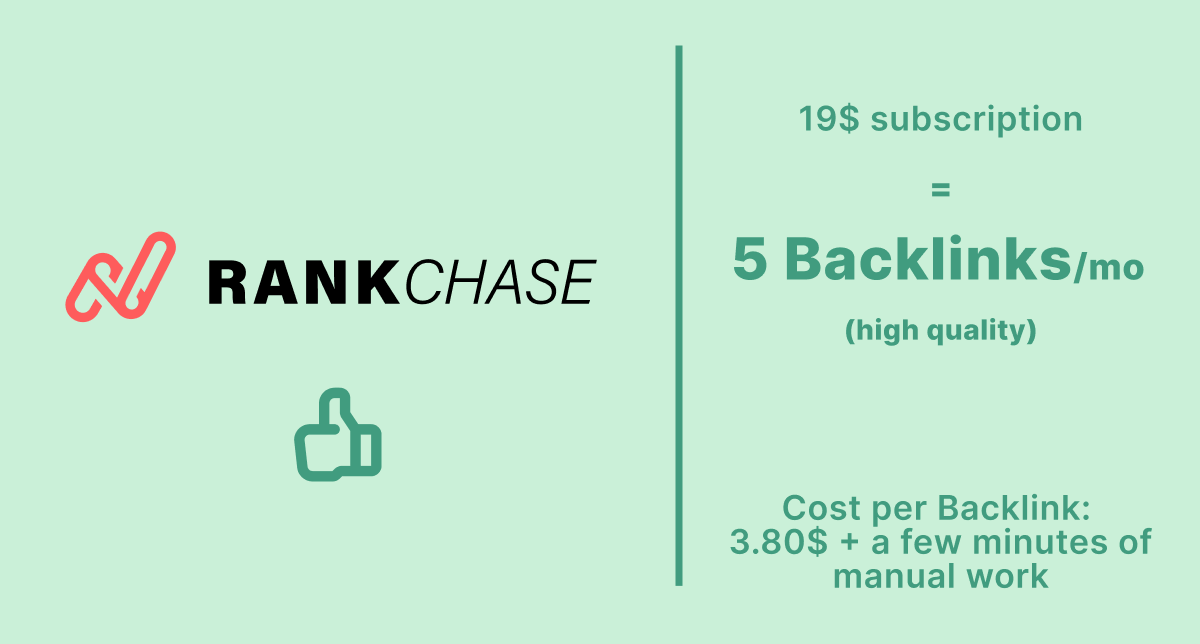
While creating and managing listicles proved effective, it still required considerable manual effort.
To streamline our link-building process further, we built RankChase, a platform designed to facilitate link and content exchange matches with relevant websites in our industry.
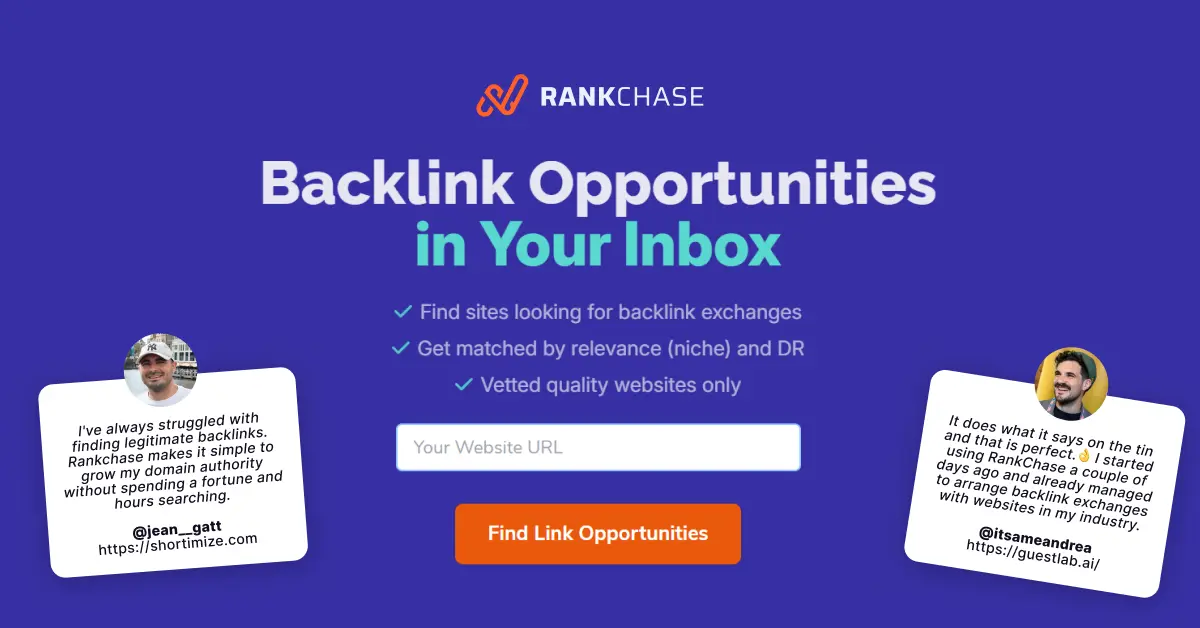
How It Works:
- Enter your domain: You submit your website's URL to RankChase.
- Analysis: The platform assesses your site's domain ranking and niche.
- Matching: It connects you with similar, niche-relevant websites also seeking link exchange collaborations.
- Notifications: Whenever a match is found, you're notified via email with contact details to initiate mutual backlink opportunities.
Why It Works:
- High Success Rate: Approximately 30–40% of matches lead to successful exchanges.
- Time Savings: Pre-vetted opportunities reduce the time spent on outreach.
By utilizing RankChase, we significantly enhanced our link-building efficiency, allowing us to focus more on creating quality content and less on the logistics of establishing connections.
Is Link exchange good for SEO?
Link exchanges can definitely be good for SEO when done the right way. The key is keeping it natural and relevant—swapping links with websites that are actually connected to your niche or add value for your audience.
Google isn’t inherently against reciprocal links; they’re a normal part of how websites build relationships and share resources. The issue arises when exchanges are excessive, spammy, or irrelevant, which can trigger penalties.
If you’re thoughtful about it, exchanging links with reputable, high-quality sites can boost your rankings, drive traffic, and strengthen your overall SEO strategy. It’s all about balance—don’t rely on link exchanges alone, but use them as part of a broader approach that includes organic backlinks and great content. When done strategically, they can secure you some of the best backlinks you can have, helping you grow your online presence without overcomplicating things.
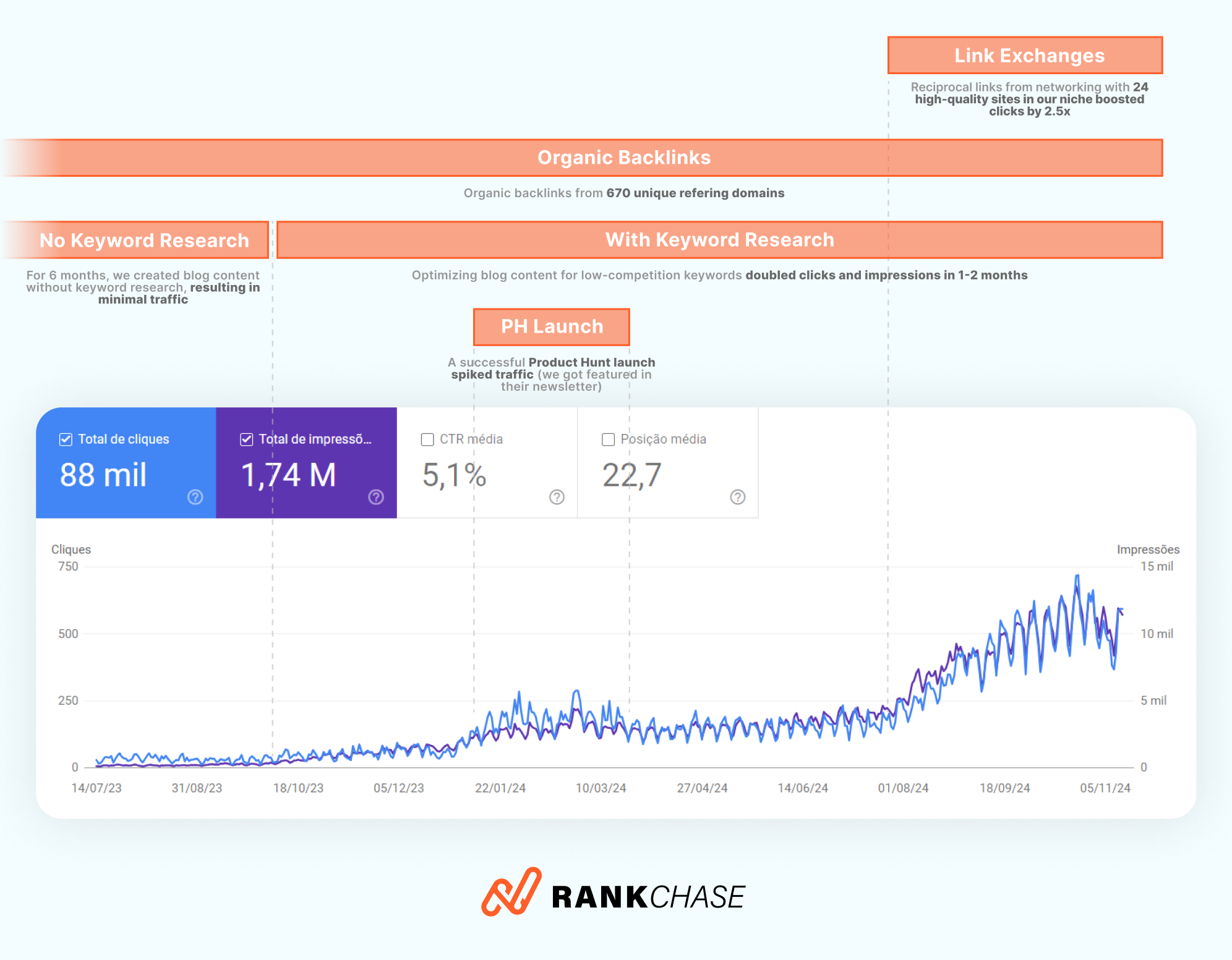
Checkout this article to learn more about Link exchanges and SEO.
Final Thoughts
Building backlinks is about more than just following popular advice. It’s about creating value, building relationships, and targeting strategies that align with your goals and resources. With persistence and a thoughtful approach, you can build a backlink profile that drives lasting results.